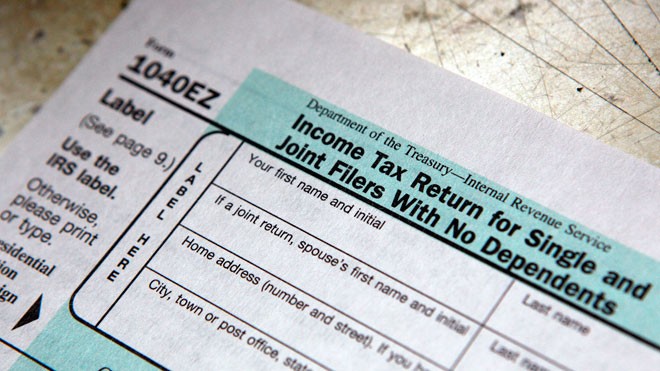5 Tax Advantages for Small Businesses This Filing Season
Post on: 16 Июль, 2015 No Comment

5 Tax Advantages for Small Businesses This Filing Season
Each tax-filing season poses different challenges for small business owners – from understanding the new tax laws and regulations to preparing new forms and disclosures.
But according to Kevin Anderson and Doug Bekker, tax partners at professional services firm BDO USA LLP. the 2014 tax season may be particularly trying for small business owners.
“The significant difference for the 2014 tax-filing season compared to prior years is that many tax law changes went into effect on January 1, 2013, including, but not limited to, an increase in overall tax rates in the highest bracket, an increase to capital gains tax rates, and the additional Medicare tax rate for certain employees and self-employed individuals,” Anderson told AccountingWEB. “Additionally, we have an entirely new federal tax to deal with – the 3.8 percent net investment income tax.”
For those small business owners who have not planned for these changes, they may find themselves in a difficult cash-flow position due to a larger-than-expected tax bill, Bekker noted.
“And due to the slight delay on the part of the IRS of the opening of the 2014 tax-filing season, which was pushed to January 31, some small business taxpayers may have already faced some challenges if they attempted to file their tax returns early,” he told AccountingWEB. “Additionally, many small business owners are still working through the health care mandate to determine if and how they will be affected.”
Five for Filing
Anderson and Bekker said there are a myriad of tax benefits and deductions available to small business owners this filing season.
“The ultimate key to taking advantage of those is having sufficient documentation and access to those with the proper expertise,” Bekker said.
Following are five ways small business owners can take advantage of the new tax rules this filing season.
1. “Safe harbor” method: Anderson and Bekker said the new, optional “safe harbor” method (effective January 1, 2013) enables small business owners to calculate and take advantage of a home office deduction if the space is regularly and exclusively used for business purposes.
“Taxpayers can claim a deduction of up to $5 per square foot of the home office, capped at 300 square feet,” Anderson said. “The home office deduction can be very beneficial, but generally is difficult to substantiate and is thus not always utilized where it can be or to its full extent. The new safe harbor allows taxpayers to claim a deduction without having to substantiate, calculate, and allocate all of their specific expenses.”
2. Bonus depreciation and Section 179: Anderson and Bekker noted that favorable bonus depreciation and Section 179 depreciation limits are still in effect for assets placed in service in 2013.
Section 179 expensing has typically been renewed by lawmakers with higher thresholds as part of a tax extenders package every year or two. But on January 1, 2014, Section 179 reverted back to its lower limits, allowing for only $25,000 in the expensing of new assets. Businesses were previously allowed a $500,000 threshold for Section 179 expensing.
But in the tax reform plan he unveiled on February 26, House Ways and Means Committee Chairman Dave Camp (R-MI) would make Section 179 expensing permanent on as much as $250,000 in capital investments each year, including real property.
“Since nearly half of the private sector workforce is employed by small businesses – nearly 60 million Americans – we must make sure the tax code works better for these Main Street job creators,” Camp wrote in his proposal.
Camp’s plan did not call for the renewal of bonus depreciation, which also expired on December 31, 2013. For 2013, a business client could generally claim 50 percent bonus depreciation for qualified property placed in service during the year, in addition to a Section 179 deduction and regular depreciation deductions.
“The 2013 depreciation rules could have a significant, favorable impact on small businesses and their owners when properly utilized,” Bekker said.
3. Health care tax credit: Small business owners may be eligible for a special tax credit for providing health insurance.
A qualified small business can use the tax credit to offset the cost of health insurance coverage provided to employees. The tax law defines a small business for this purpose as one with fewer than 25 employees, with average annual wages of less than $50,000 per employee.
For 2010 through 2013, the credit was equal to 35 percent of the nonelective contributions made on behalf of employees (25 percent for tax-exempt organizations). In 2014, the maximum credit increased to 50 percent (35 percent for tax-exempt organizations).

“This could leave significant cash on the table for small businesses that qualify and choose to provide this benefit but are unaware of the credit,” Anderson said.
4. Standard mileage rates: The IRS’s standard mileage rate for business mileage driven increased from 55.5 cents per mile in 2012 to 56.5 cents per mile in 2013.
“If you’re not using software or you lack assistance when preparing tax returns, you could easily end up paying more taxes than would otherwise be required,” Bekker said.
The standard mileage rate for business miles driven in 2014 dropped slightly to 56 cents per mile, according to the IRS. Also, the standard mileage rate for charitable deductions, which is set by federal statute, remains at 14 cents per mile (the same rate as 2013).
5. Consider the way you are organized for tax/legal purposes to ensure it is meeting your needs and maximizing tax efficiencies: “For example, if the business is considered a C corporation for tax purposes and your long-term plan consists of selling or transitioning the business, you may consider converting to an S corporation or even a limited liability company, depending upon the circumstances, in order to minimize your tax liability in future years,” Anderson said. “It’s never too late to plan for the future.”
Biggest Tax-Filing Mistakes
Due to a lack of resources, funds, and time, small business owners will often not retain sufficient documentation to substantiate deductions upon an IRS audit, according to Bekker.
“It is common for many businesses to miss out on deductions that they would otherwise be entitled to due to insufficient bookkeeping, lost receipts, or lack of knowledge or expertise on available tax deductions,” he said. “Also, small business owners are often so involved with their businesses that the lines of business and personal can often become blurred, and personal expenses can sometimes inappropriately be listed as business expenses. This is an extremely common IRS audit adjustment and can lead to penalties and interest that could otherwise be avoided.”
So what can small business owners do the rest of this year to make filing their taxes easier next year?
“Maintenance of receipts, timely bookkeeping, mileage tracking, and just general documentation are all items that can make tax filing easier and less time-consuming when next year’s tax filings are due,” Anderson said. “Doing these things upfront can help ensure businesses and their owners are maximizing their deductions and help to reduce or eliminate the use of estimates and risk.”
Related articles:














